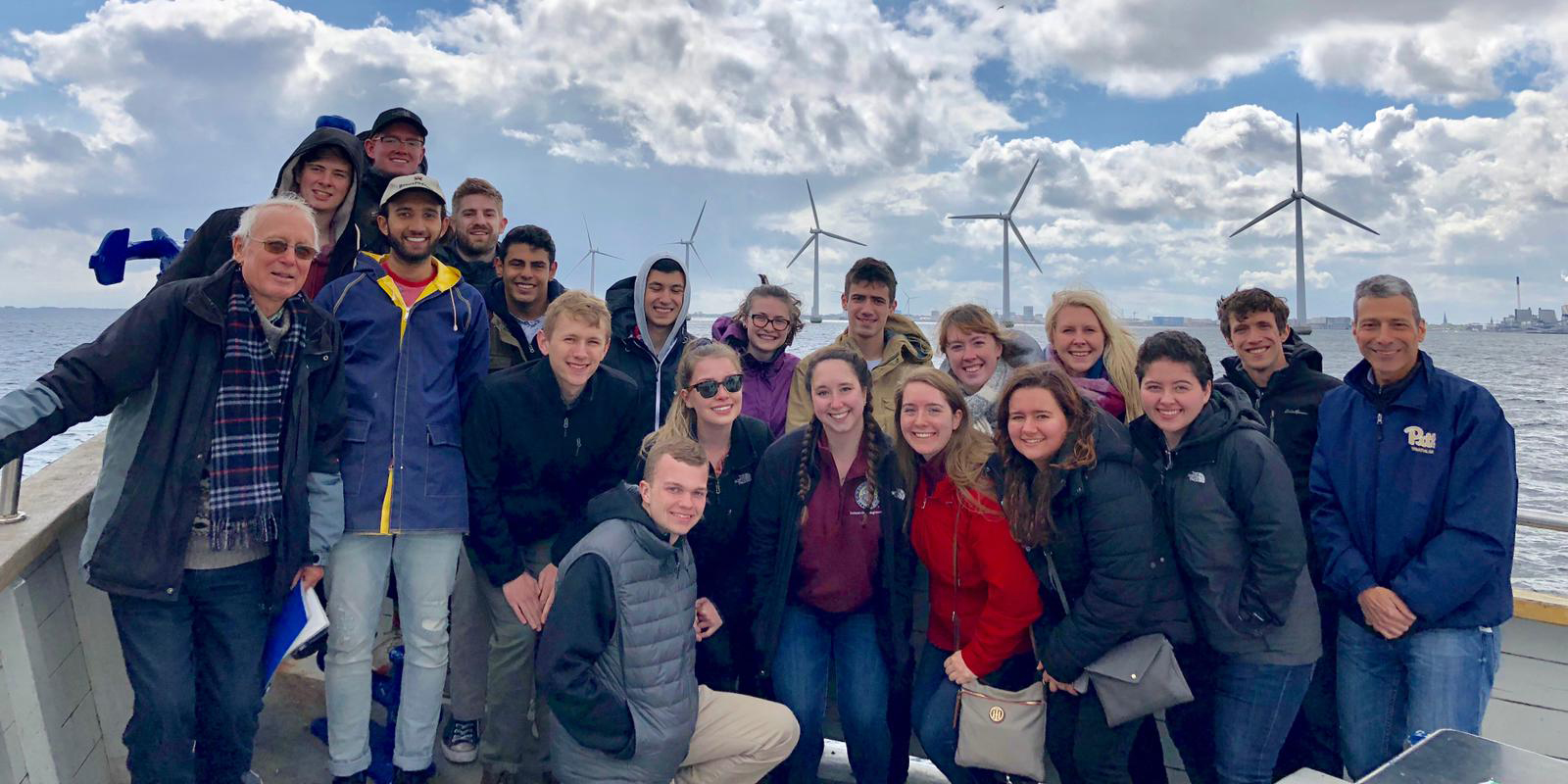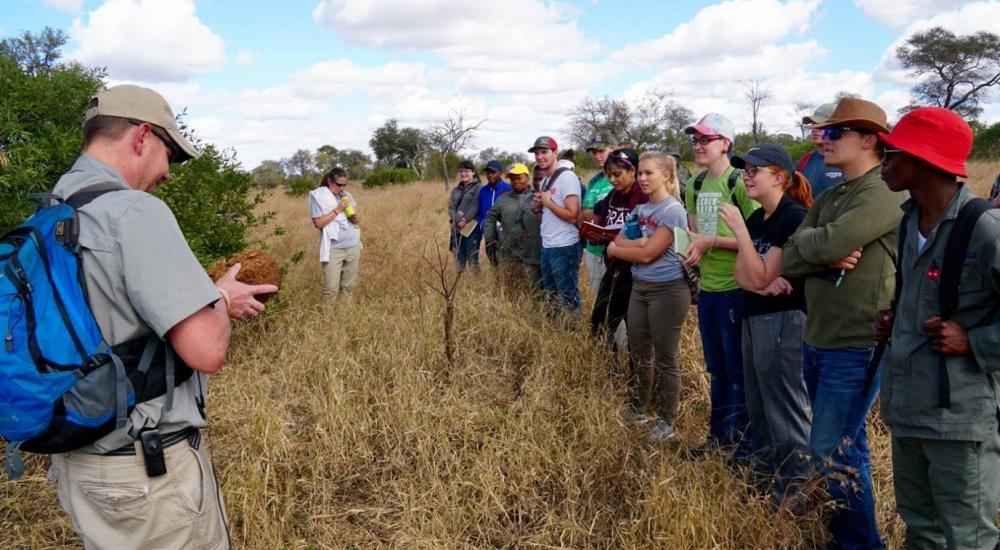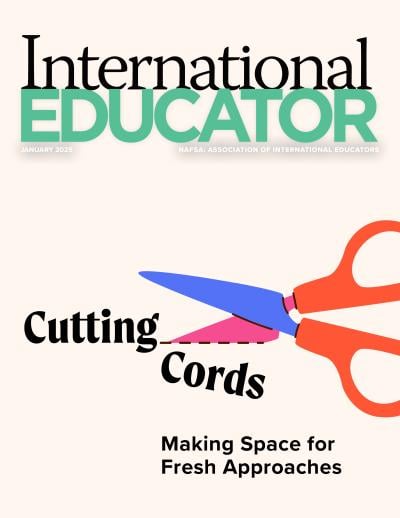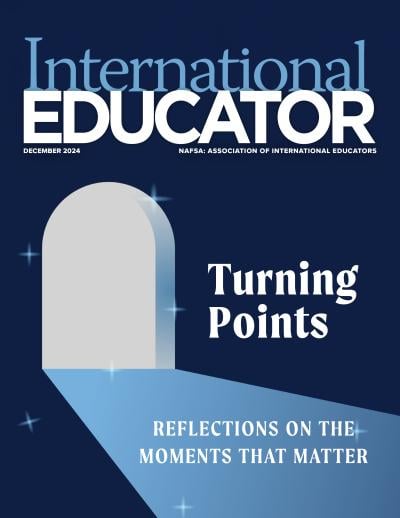Five Considerations for Building a Strategic Education Abroad Portfolio

As part of their internationalization efforts, many institutions encourage all students to embark on at least one international experience during their time on campus. Achieving that goal requires building a strategic portfolio of study abroad programs that meet the needs of an institution’s specific student population and align with campus priorities.
“A strategic mix of education abroad programs gives students focused choices in programs that are best suited to meet their academic and personal needs,” Leigh Neys, director of the Office of International Programs at Northern State University. “[It also] enables the university to develop programs that are in line with the university’s mission, vision, and learning outcomes [and] helps campus constituencies better advise students on program choices.”
Institutions may incorporate a broad range of programs and destinations into their menu of global learning experiences: faculty-led or third-party provider programs, short-term or long-term excursions, low-cost programs, programs for specific majors, exchange programs, traditional or nontraditional destinations, embedded study abroad courses, and more.
The challenge is putting together the right mix of programs that appeals to as many students as possible while considering a wide range of pricing, academic, and personal needs. Here are five strategies for creating a strategic study abroad portfolio:
1. Conduct a program audit.
Before an education abroad office can take steps to develop a more strategic portfolio of programs, the office has to take stock of the programs already available. Which ones are popular, and which ones aren’t working? Look for gaps, as well as overlaps, in programming and destination options. Consider whether it would be more beneficial to expand, where needed, using campus resources or through partnerships with affiliate programs.
Northern State, for example, audited its programs and related administrative burdens. As a result, several dual-degree programs were eliminated because of difficulty maintaining articulation agreements amid changes to general education or degree requirements. To fill the gaps, “we’ve focused our efforts on direct exchange,” Neys says.
2. Listen to the students.
Students have varying needs when it comes to budgets, academic goals, experiential learning opportunities, personal interests, and a host of other factors. Jeffrey Whitehead, director of Pitt Study Abroad at the University of Pittsburgh, emphasizes the importance of listening to students. Since 2010, he has conducted numerous surveys, focus groups, and listening sessions to find out what students are thinking.
Whitehead’s team keeps abreast of student interest through a decentralized organizational approach in which embedded study abroad managers in the schools of engineering, business, and nursing work closely with faculty to develop programs that meet the specialized needs of students in those fields. The university plans to add program managers in other areas over the next year.
“Students tend to congregate where their classes are, so they don't have to go across campus to come and see us,” Whitehead says. “They can walk right from their classes and down the hallway to see people who are involved with study abroad. These on-site managers can speak the language of the students, understand their degree requirements, and help them stay on track to complete their degrees on time.”
3. Find partners across campus.
As education abroad offices develop new programs, it is crucial to involve key stakeholders across campus, including the registrar's office, student services, financial aid, enrollment management, and academic departments.
“Education abroad is not solely an international office function,” Neys says. “It's really a cross-campus function.”
Enlist the support of faculty to identify opportunities that may fit well with student interest and help achieve desired learning outcomes. Pitt has established nearly 100 faculty-led programs over the last decade, varying from short-term programs up to semester-long experiences. These have become extremely popular.
“Our faculty members build all kinds of great programs based on their expertise and their knowledge of the professional skills students should be developing through their academic programs,” Whitehead says.
4. Involve third-party providers.
Lauren Alexander, who recently left her post as an associate vice president for university partnerships at International Studies Abroad, recommends consulting with third-party providers when considering whether any partner programs should be added or eliminated. Representatives of these organizations can shed light on whether their programs duplicate an experience already offered by the education abroad office or if they provide a unique opportunity that is not possible for the office to deliver.
“From a partnership perspective, it was always important to me that we were really serving a need that a university had identified, and not overwhelming students or advisers with underutilized or duplicative programs,” says Alexander, who joined Brown University in November as deputy director of the Office of International Programs. “Reach out, ask for help, and make your affiliates be partners for you. And don't be shy about breaking up when it’s in the best interest of your students.”
5. Align with institutional priorities.
Ultimately, an institution’s strategic priorities should guide the development of the study abroad portfolio. How much emphasis does the campus community place on experiential learning, for example? Are faculty members committed to ensuring that their students have access to global experiences?
ArtCenter College of Design in Pasadena, California, for example, strives to prepare artists and designers to change the world through their creativity. To that end, the college invites students pursuing a minor in social innovation to participate in a study abroad program in Chile. During the program, students work with Safe Niños Studio to design charity thrift shops throughout the country to benefit a nonprofit pediatric burn treatment facility.
“These students go to Chile, and they work with several clinics to begin to research and actually develop and redesign the environment so that children feel more comfortable,” says Aaron Bruce, ArtCenter’s vice president and chief diversity officer. “We offer similar study away projects around the world that help students learn how their creative energy can create social change.”
The Value of Reassessing
From short-term faculty-led study abroad programs to year-long exchanges coordinated through third-party providers, students’ needs and interests vary. With these variables, as well as campus priorities and budget constraints, it is important for education abroad offices to reassess offerings and make changes where needed. •
NAFSA Resources
- “Designing Quality Academic Programs in Education Abroad” e-Learning Seminar
- “Developing an International Internship Program” e-Learning Seminar
- Facilitating Education Abroad: Blueprints for Successful Advising
- NAFSA’s Guide to Education Abroad for Advisers and Administrators, Fourth Edition: Chapter 13
About International Educator
International Educator is NAFSA’s flagship publication and has been published continually since 1990. As a record of the association and the field of international education, IE includes articles on a variety of topics, trends, and issues facing NAFSA members and their work.
From in-depth features to interviews with thought leaders and columns tailored to NAFSA’s knowledge communities, IE provides must-read context and analysis to those working around the globe to advance international education and exchange.
About NAFSA
NAFSA: Association of International Educators is the world's largest nonprofit association dedicated to international education and exchange. NAFSA serves the needs of more than 10,000 members and international educators worldwide at more than 3,500 institutions, in over 150 countries.
NAFSA membership provides you with unmatched access to best-in-class programs, critical updates, and resources to professionalize your practice. Members gain unrivaled opportunities to partner with experienced international education leaders.
















